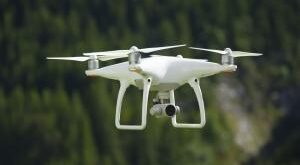 At first look, Canada’s proposed new drone laws look like an enormous step ahead for the drone . With clear risk-based classes and distant pilot licensing system, the laws seem to remove a lot of the burden of submitting for SFOCs and different paperwork that Canadian drone operators cope with.
At first look, Canada’s proposed new drone laws look like an enormous step ahead for the drone . With clear risk-based classes and distant pilot licensing system, the laws seem to remove a lot of the burden of submitting for SFOCs and different paperwork that Canadian drone operators cope with.
But like all the things else, says skilled operator Mike Campbell of CKMM Photographic in Ontario, the satan’s in the small print.
” The regulation is 78 pages,” says Campbell. “It’s one of the longest regulation updates that has ever been published. It’s a big deal from a regulator’s perspective -but there are a lot of holes and issues with it.” Campbell agrees that the pilot allowing course of, removing of the medical requirement for pilots, and never having to file SFOCs are helpful. But, he factors out, there’s a main level in the proposal with the potential to be an industry-killer: the requirement for a “compliant aircraft” for industrial operations in city areas.
At first learn, it doesn’t appear unreasonable to require that plane be manufactured to a normal – not all home-grown machines are appropriate for industrial use, though some are glorious. But Campbell factors out that the requirement isn’t a tenet and it isn’t common – it refers to an precise checklist of compliant plane. A really quick checklist of very costly plane. “Typically, compliant aircraft cost 4 -10X what a standard prosumer drone costs,” says Campbell. “That’s a business-killer.”
Campbell, who’s a member of the Unmanned Systems Canada committee getting ready a response to the proposal and a volunteer on the technical committee, says that not one of the DJI, Yuneec or different main producer prosumer drones are on the checklist despite the fact that they’re the plane most generally utilized by industrial operators. And whereas operators initially assumed “grandfather clause” would cowl them till lawmakers expanded the checklist to cowl extra plane, the positive print says that gained’t repair the issue for city areas. Operators who wish to grandfather their plane will solely be allowed to fly in rural areas 1/2 nautical mile from a “built up” space. “It’s something that you have to be a policy nerd to pick up,” says Campbell. “… in reality, that grandfather clause just doesn’t help commercial operators.”
While the compliant plane requirement is the primary level of competition, “There’s a lot of little silliness that doesn’t belong in there,” says Campbell. He factors out that objects like defining a 20-meter radius takeoff and touchdown space belong in the operational procedures for organizations, not in federal laws. And defining the time intervals that the federal government has to answer requests to fly in managed airspace doesn’t make sense – it doesn’t permit for or encourage course of enhancements.
Campbell says that almost all operators are completely in favor of laws – they only wish to make certain that they’re affordable and well timed. And whereas he’s not in opposition to the thought of compliant plane, he feels it’s simply too quickly to implement that sort of program: “They’re just spinning up the groups on the Transport Canada side… we need a transition period, we need time for the manufacturers to get a roadmap in place.” If the foundations are enacted as they stand, Canadian drone operators will undergo. “We risk going from leader to laggard,” says Campbell.
The predominant message for Canadian drone operators? Comment now. “This is the time to get your concerns lodged with Transport,” says Campbell. Transport Canada is accepting public touch upon the laws till October 13, 2017. Those wishing to remark could take part in a web based discussion board, attend one of many remaining public engagement periods, or remark by e mail despatched to [email protected]
 Unmanned Aerial Vehicle The latest drone news
Unmanned Aerial Vehicle The latest drone news



